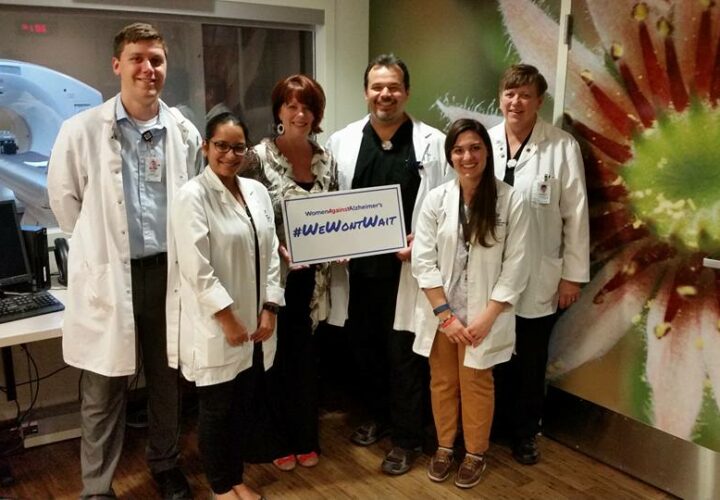Dr. Francisco Lopera was a young medical resident in Antioquia, Colombia when he encountered his first familial Alzheimer’s patient in the mid 1980s. The patient, a man from a local village, was only 47 years old. Over the next few years, Lopera would meet more and more patients like him—all middle-aged adults with severe memory problems.
Intrigued by this trend, he decided to investigate. What he discovered would revolutionize how science understands familial Alzheimer’s disease and give lead to one of the first Alzheimer’s prevention trials in the world.
A family with almost a 100 percent chance of Alzheimer’s
Over the next three decades Lopera unearthed more and more cases of people in mid-life with symptoms of familial Alzheimer’s and traced their family trees. He discovered that almost every case came from a single extended family whose members carry a rare genetic mutation, called the Paisa mutation, that gives them almost a 100 percent chance of getting Alzheimer’s disease. Lopera had uncovered the largest concentration of early-onset cases in the world—a devastating reality for the families but the perfect laboratory for scientists in search of a cure. Lopera had uncovered the largest concentration of early-onset cases in the world—a devastating reality for the families but the perfect laboratory for scientists in search of a cure. The fact that family members with the mutation had near-certainty of developing the disease presented scientists with a unique opportunity to see if it could be prevented.
After 30 years, a trial offers hope
After years of research and planning, in 2013, Lopera and his team launched a multi-million dollar drug trial with the Banner Alzheimer’s Institute. For Dr. Lopera, who has seen the devastating impact of the disease on the families in Antioquia, it was a big moment.
“I’m very happy because, for the first time, we are able to offer hope to the population,” said Lopera. “We were working for 30 years without hope, without real options. We don’t know if the clinical trial is going to work but we are doing something. This is a new era for us.”
The trial, which finished enrollment in 2017, has 250 participants without any symptoms of Alzheimer’s disease; some carry the mutation and some do not. Over five years they’ll either be given a placebo or doses of crenezumab, a drug designed to break down beta-amyloid, the sticky protein that is believed to be the culprit behind the memory-robbing disease. Despite years of failed trials for drugs targeting amyloid, many in the scientific community believe amyloid is the right target, but they’ve been hitting it at the wrong time—most trials are conducted on people who are already showing the symptoms of Alzheimer’s disease, when the damage to the brain may already irreparable.
Is beta-amyloid the right target?
When you look at the genetics of early-onset Alzheimer’s, there’s a “compelling” case for beta-amyloid as a driver of the disease, according to Dr. Pierre Tariot, chief researcher for the trial at Banner Alzheimer’s Institute. All of the three known genetic mutations that lead to early-onset Alzheimer’s disrupt the regulation of beta-amyloid levels in the body, leading to overproduction of the protein. Even children who carry the Paisa mutation show a build-up of beta-amyloid in their blood.
Even children who carry the Paisa mutation show build up of beta-amyloid in their blood.
“People want one answer, and I don’t think amyloid is the answer. What we say is perhaps amyloid is to Alzheimer’s disease as cholesterol is to heart disease. It’s an important player, sometimes sufficient to cause the disease … but not the whole story,” said Tariot.
How genetics factor into familial Alzheimer’s risk
Cases of confirmed hereditary familial Alzheimer’s disease are rare—most cases are the late-onset form of the disease and the factors that affect risk are complex. We know that having Alzheimer’s disease in the family does slightly increase risk, with some studies showing a five-fold increase in risk for those with a parent or sibling with Alzheimer’s, but there is no single set of proven lifestyle or genetic risk factors that can accurately predict whether someone will get the disease. Scientists are starting to put together a picture of how genetics may affect the disease.
Perhaps amyloid is to Alzheimer’s disease as cholesterol is to heart disease. It’s an important player, sometimes sufficient to cause the disease … but not the whole story.
The greatest genetic predictor of late-onset risk is the ApoE4 gene. Since its discovery in 1993, scientists have been working to understand exactly how it affects the brain at a biological level, in the hope that this would unlock some of the crucial questions around how and why the disease progresses and pave the way for potential treatments. Recent studies have shown that it could play a role in how beta-amyloid and tau, the toxic proteins that are the hallmarks of the disease, build up and attack brain cells by hampering the brain’s ability to clear them. Others think that ApoE4-carriers have trouble converting glucose into energy, which aligns with findings that people whose brains are less able to break down sugar have more beta-amyloid plaques and tau tangles.
Last year researchers uncovered three new genetic factors that could raise risk and confirmed 30 others after studying of the DNA of over 370,000 people. In the same year, a new test, the polygenic risk score, was used to accurately identify people with mild cognitive impairment in their 50s, 80 percent of whom will go on to develop Alzheimer’s.
Tariot is also directing two companion prevention trials to the Colombia study, aimed at 60- to 80-year-olds with either one or two copies of the ApoE4 gene to see if the late-onset form of the disease can also be prevented. If these trials prove successful, Alzheimer’s may become a preventable disease—but it’s still not clear if what works for genetically pre-disposed will work for others with the disease.
“We simply don’t know the answer,” said Tariot. “It remains to be seen whether or not that phenomenon would generalize to people at risk for late-onset Alzheimer’s. Late onset Alzheimer’s disease is really a multi-faceted problem—we each carry a kind of complex mixture of risk and protective variables that are genetic and experiential. It isn’t a simple story.”
When will we have more answers?
Tariot, Lopera and their teams will get their first inkling when the first results of the Colombia trial come out in 2022. For now, the main task is to keep participants engaged as the trial progresses and they go through brain scans, memory tests and spinal taps, along with facing potential side effects ranging from headaches to hemorrhage. Most come from the poorer rural regions of Antioquia and taking part in the familial Alzheimer’s trial means missing work, being away from their families and undergoing invasive medical scans. Participants and their families get several supports—including creative art, dancing and painting classes, job training, birthday cards and even money for diapers.
Even if the trial is unsuccessful, the information gained from it will be invaluable for future familial Alzheimer’s prevention trials, said Lopera.
“Our hope is to have success, but the population is prepared for any result. Regardless, we think that we have started the era of prevention here in Colombia. Even if this one isn’t successful, we have discovered other families with genetic mutations and we may be able to translate the knowledge we’ve gained on the biomarkers for the disease to the general population in future clinical trials,” he said. “But it if it is, we can run faster in the race to prevent Alzheimer’s disease.”
The original version of the article incorrectly stated that the drug trial was launched in 2011 but the correct year is 2013. It also stated that that the trial completed enrollment in 2013 but that year has now been revised to 2017, when the last participant was enrolled.



